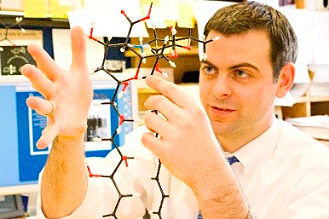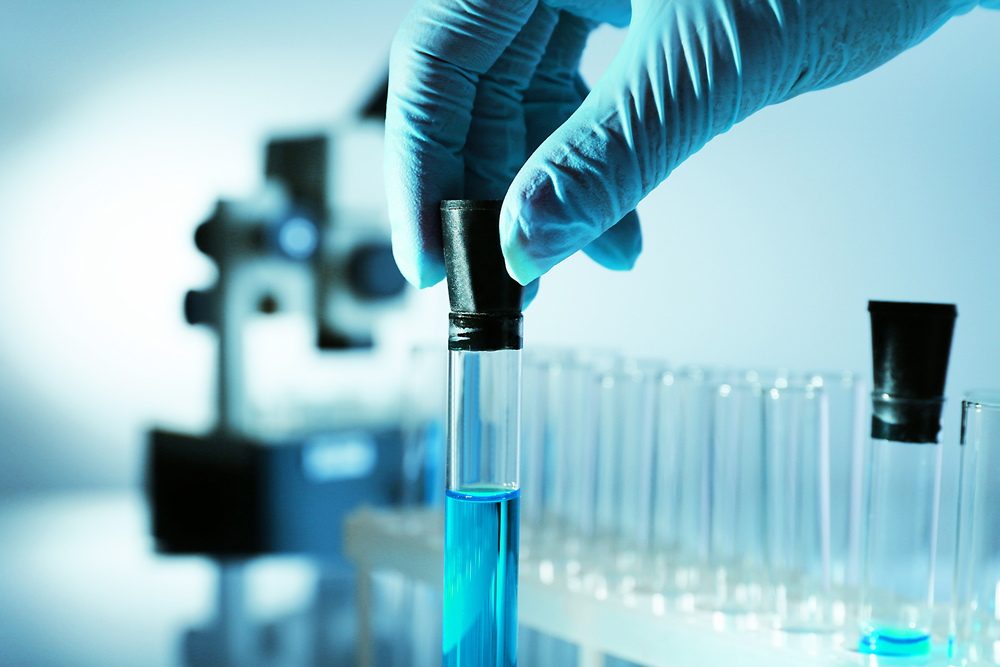A team of investigators working out of the lab of Professor Martin D. Burke at the University of Illinois UrbanaChampaign campus in Urbana, Illinois, notes that while treatments for cystic fibrosis (CF) have added years to the lives of thousands of Americans, they can be difficult to administer, and most don’t fix the underlying cause of the disease.
That cause is a genetic mutation that affects certain cellular proteins that make up channels, which act like gates managing the flow of ions in and out of cells. In CF, some of these gates don’t work as they are supposed to, ultimately leading to thick buildups of mucus in the lungs and other organs that can make it difficult for people with CF to breathe. Treatment can involve inhaled medicines, enzyme supplements at every meal and clearing out airways, which sometimes requires the help of others.
Dr. Burke and his colleagues wanted to find a way to better address the root cause of the disease, reporting in the Journal of the American Chemical Society that they focused their investigations on a natural small molecule called amphotericin B, which was originally extracted from bacteria and is used to treat fungal infections, and that they found can also substitute for a protein and restore a key cellular function related to those missing in people with CF and similar conditions.
The researchers tested amphotericin B at low doses on a strain of yeast that is unable to transport ions in and out of its cells, and therefore doesn’t grow. However, they found that with treatment, the yeast grew nearly as well as the control. The researchers say this shows that channel-forming small molecules can work in collaboration with protein pumps and channels in cell membranes to restore the flow of ions, and also suggest that while it remains to be seen whether this approach can be effective in human diseases like cystic fibrosis, the results in yeast provide a mechanistic framework for pursuing their finding as a potential therapeutic strategy.
The JACS paper is entitled “Restored Physiology in Protein-Deficient Yeast by a Small Molecule Channel“ (J. Am. Chem. Soc., 2015, 137 (32), pp 1009610099. DOI: 10.1021/jacs.5b05765), and is coauthored by Alexander G. Cioffi, Jennifer Hou, Anthony S. Grillo, Katrina A. Diaz, and Martin D. Burke of the Burke Lab at the Howard Hughes Medical Institute and Departments of Biochemistry and Chemistry at the University of Illinois at UrbanaChampaign.
 Dr. Burke was promoted to Associate Professor with tenure in 2011 and received a full professorship in 2014, and his group’s research focuses on synthesis and study of small molecules that perform protein-like functions, some molecules of which may ultimately serve as substitutes for missing or dysfunctional proteins that underlie human diseases, thereby operating as “prostheses” on the molecular scale.
Dr. Burke was promoted to Associate Professor with tenure in 2011 and received a full professorship in 2014, and his group’s research focuses on synthesis and study of small molecules that perform protein-like functions, some molecules of which may ultimately serve as substitutes for missing or dysfunctional proteins that underlie human diseases, thereby operating as “prostheses” on the molecular scale.
To enable these studies, the Burke group is pioneering a synthesis strategy, dubbed “iterative cross-coupling,” that aims to make the process of complex small molecule synthesis as simple, efficient, and flexible as possible. This work has led to the development of more than 175 commercially-available MIDA boronate building blocks that are now enabling the more effective synthesis of small molecules in many different academic and industrial institutions throughout the world.
Dr. Burke’s team is now harnessing the power of this chemistry to systematically dissect the structure/function relationships that underlie the protein-like activities of a variety of prototypical small molecules — efforts that collectively seek to build a foundation for development of molecular prosthetics as a powerful and general strategy for the understanding and betterment of human health.
RELATED: An Undeniable Hope Part 2: An Accumulation of Steps Led To Orkambi
Observing that human diseases caused by an excess of protein function can often be treated effectively using small molecules that bind to the offending proteins and turn them off, the investigators note that by contrast, diseases caused by protein deficiencies are generally refractory to this approach, and thus most of these diseases remain as yet incurable with modern medicine. The Burke group therefore aims to advance the frontiers of pharmacology towards , i.e., functional small molecules that serve as substitutes for missing or dysfunctional proteins that underlie currently incurable human diseases.
“In this context, our research focuses on the synthesis and study of small molecules with protein-like functions,” the coauthors observe. “To enable these studies, we are developing new strategies and methods with the goal of making the process of complex small molecule synthesis as simple, efficient, and flexible as possible. We further aim to harness the power of this chemistry to illuminate the fundamental underpinnings of higher-order small molecule function in atomistic detail. Collectively, these efforts seek to make possible the development of molecular prosthetics as a general strategy for the understanding and betterment of human health.”
This research received funding from the Howard Hughes Medical Institute, the National Institutes of Health and the National Science Foundation.
Sources:
American Chemical Society News
Journal of the American Chemical Society
Howard Hughes Medical Institute
The University of Illinois at UrbanaChampaign
Image Credits:
The University of Illinois at UrbanaChampaign

